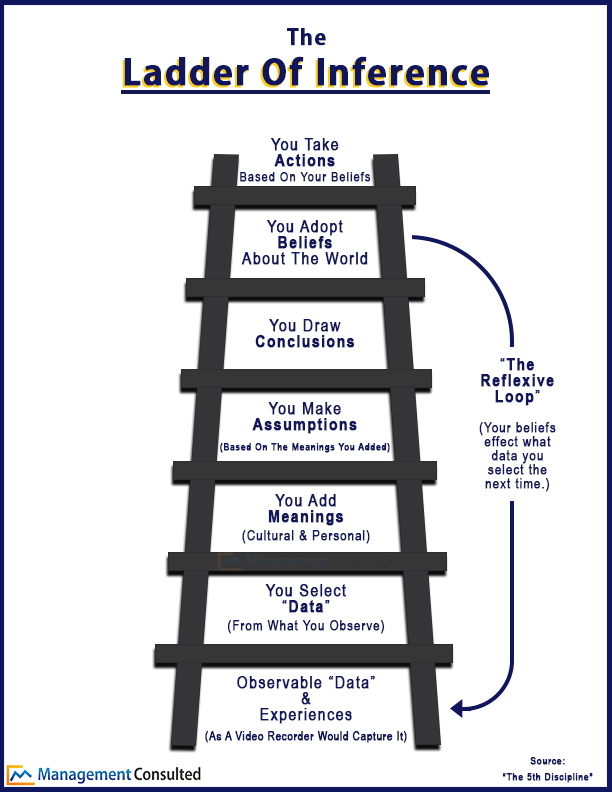
In today’s fast-paced world, have we been jumping to conclusions without comprehending how we arrived at them? Could there be instances where the deduction we made are only partially right or did we naturally assume the situation based on our perspective or bias?
These can not only lead us to making a wrong conclusion but potentially also causing conflict with other people whom may have drawn different conclusions on the same matter.
It is therefore important that we need to make sure our actions and conclusions are founded on true facts and reasoning so that we are firmly supported when someone else challenged our decisions. The “Ladder of Inference” is a useful theory that helps to describe the thinking process that we go through, to get from a fact to a decision or action.
How does this ladder work?
The Ladder of Inference has seven steps and the reasoning/thought process starts at the bottom of the ladder.

Our beliefs have a huge impact on how we select from reality or choosing to ignore some. Soon we might jump to conclusions by missing facts in the thought process. For example, depending on my beliefs if intelligence is inborn or something that we can train to be better, it might change the way I act –
However, what are the basis of these beliefs? Using The Ladder of Inference, it will teach you to look at unbiased facts and be aware of the data you have, whether they are founded on facts. Some questions you may ask yourself are:
This could be useful in maintaining respect and trust in any type of relationship be it personal, intimate or professional. It is important that our decisions and actions are founded on facts rather than hearsays or biasness. To better understand another, we can pick their brain and seek out how they arrived at their beliefs.
By understanding how our thought process are like, perhaps we can be a little bit more curious about our surroundings. How are the kids growing, why are they acting as such and what are their learning phases like? Hopefully, then we will be googling more (the right resources) often to satisfy our curiosity.